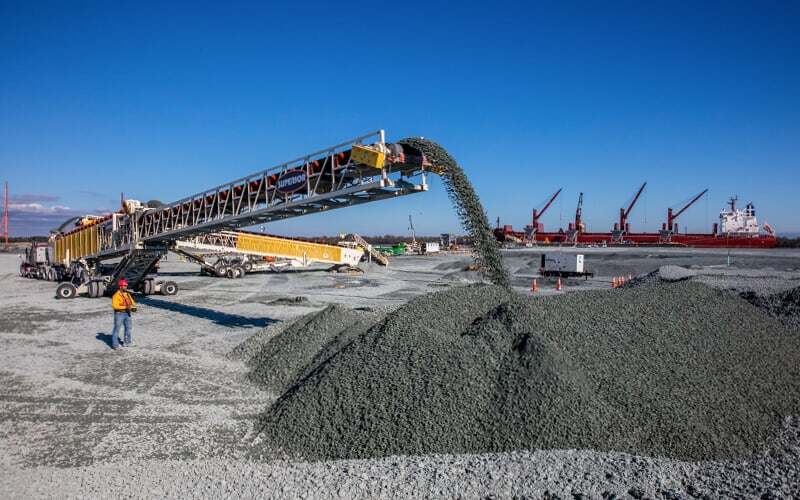Case Study
Bulk Conveying Equipment
- New South Wales, Australia
- LOCATION
- Ocean Terminal: Ship Loading
- INDUSTRY

The Challenge
Bulk Conveying Equipment (BCE) faced a significant challenge at Port Kembla, one of Australia’s busiest import/export centers. The port required a flexible, cost-effective, and highly mobile ship loading system to handle a wide range of bulk materials, including coal, coke, iron ore, and slag.
The traditional fixed ship loading systems were outdated, costly, and unable to adapt to the varying demands of different vessel sizes and materials. Additionally, BCE needed a solution that could operate within a limited berth footprint and comply with stringent environmental regulations, such as minimizing spillage and preventing stockpiling of materials on the berth.
“Our system gives us so much versatility and is not limited in any way.”
The Solution
To meet these challenges, BCE implemented a customized mobile ship loading system designed and manufactured by Superior Industries. The system includes a 72-inch RazerTail® Truck Unloader and two TeleStacker® Conveyors – one 150-foot and one 170-foot, both designed for ship loading.
This mobile setup allows BCE to quickly and efficiently load vessels of various sizes, ranging from 5,000 to 55,000 tons, without the need for extensive infrastructure or fixed equipment.
The system’s mobility is further enhanced by a mobile pivot base that enables 360-degree rotation and rapid repositioning along the berth, ensuring that loading operations can be optimized for different hatch configurations. The telescoping capability of the conveyors allows for precise placement of materials within the hatches, reducing spillage and enhancing load efficiency.


The Results
The implementation of Superior Industries' mobile ship loading system has significantly enhanced BCE’s operation at Port Kembla. The system has achieved higher loading capacities, with BCE now able to load up to 1,200 tons per hour of iron ore and 450 tons per hour of coke, depending on hatch changes and screening requirements.
The flexible and portable design has minimized material segregation, reduced capital equipment costs, and allowed for quick on-site assembly and relocation under a smaller footprint. Additionally, the system’s features, such as ceramic liners, AR steel liners, rubber skirting, and stainless steel underpans, have ensured compliance with regulations, while also protecting equipment from wear and tear.

OptimizeU - Strategic Learning
Pursue greater production with comprehensive online courses in crushing, screening, conveying, and washing. Check out the premiere training resource in the construction aggregates industry.
Related Content

From Cranes to Conveyors: Levin Richmond Boosts Capacity with Superior’s Shiploader

Woodville Pellets Boosts Shiploading Capacity with Self-Powered, Mobile Shiploader

